Day
The day is a unit of time typically defined as the period during which the Earth completes one rotation on its axis. This causes the alternation of light and darkness, commonly known as day and night. The length of a day is not constant throughout the year due to the Earth's axial tilt and elliptical orbit around the sun.
Key Concepts
- Rotation of the Earth: The Earth rotates on its axis, causing the alternation of day and night.
- 24-Hour Cycle: A full day consists of 24 hours, with each hour representing a specific portion of the day or night.
- Daylight Hours: The number of daylight hours varies based on the time of year and the latitude of a location.
Study Guide
What Causes Day and Night?
Explain the concept of the Earth's rotation and how it leads to the alternation of day and night.
Length of a Day
Discuss why the length of a day is not constant throughout the year and how it varies based on the Earth's axial tilt and elliptical orbit around the sun.
Daylight Hours
Describe the factors that influence the number of daylight hours at different times of the year and at different latitudes.
.◂Science Worksheets and Study Guides Eighth Grade. The Movement of Ocean Water
Study Guide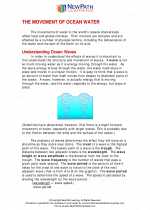 The Movement of Ocean Water
The Movement of Ocean Water  Worksheet/Answer key
Worksheet/Answer key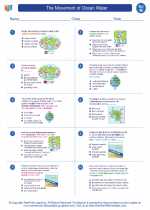 The Movement of Ocean Water
The Movement of Ocean Water  Worksheet/Answer key
Worksheet/Answer key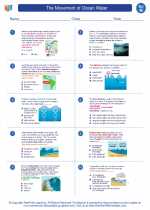 The Movement of Ocean Water
The Movement of Ocean Water  Worksheet/Answer key
Worksheet/Answer key The Movement of Ocean Water
The Movement of Ocean Water  Vocabulary/Answer key
Vocabulary/Answer key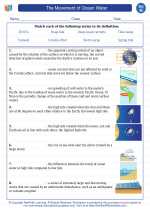 The Movement of Ocean Water
The Movement of Ocean Water  Vocabulary/Answer key
Vocabulary/Answer key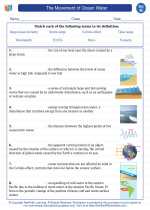 The Movement of Ocean Water
The Movement of Ocean Water 

 Worksheet/Answer key
Worksheet/Answer key
 Worksheet/Answer key
Worksheet/Answer key
 Worksheet/Answer key
Worksheet/Answer key
 Vocabulary/Answer key
Vocabulary/Answer key
 Vocabulary/Answer key
Vocabulary/Answer key

The resources above cover the following skills:
Earth/Space Science: Students will use scientific skills and processes to explain the chemical and physical interactions (i.e., natural forces and cycles, transfer of energy) of the environment, Earth, and the universe that occur over time.
Interactions of Hydrosphere and Atmosphere: Cite evidence to explain the relationship between the hydrosphere and atmosphere.
Identify and describe how the temperature and precipitation in a geographic area are affected by surface features and changes in atmospheric and ocean content: Relative location of mountains; Volcanic eruptions; Proximity to large bodies of water; Heat energy of ocean currents.
Interactions of Hydrosphere and Atmosphere: Recognize and describe the various factors that affect climate.
Identify and describe how the temperature and precipitation of an area are affected by surface and ocean features: Relative location of mountains; Proximity to large bodies of water; Warm and cold ocean currents.
Recognize and describe the global effects of volcanic eruptions, greenhouse gases, and El Nino.